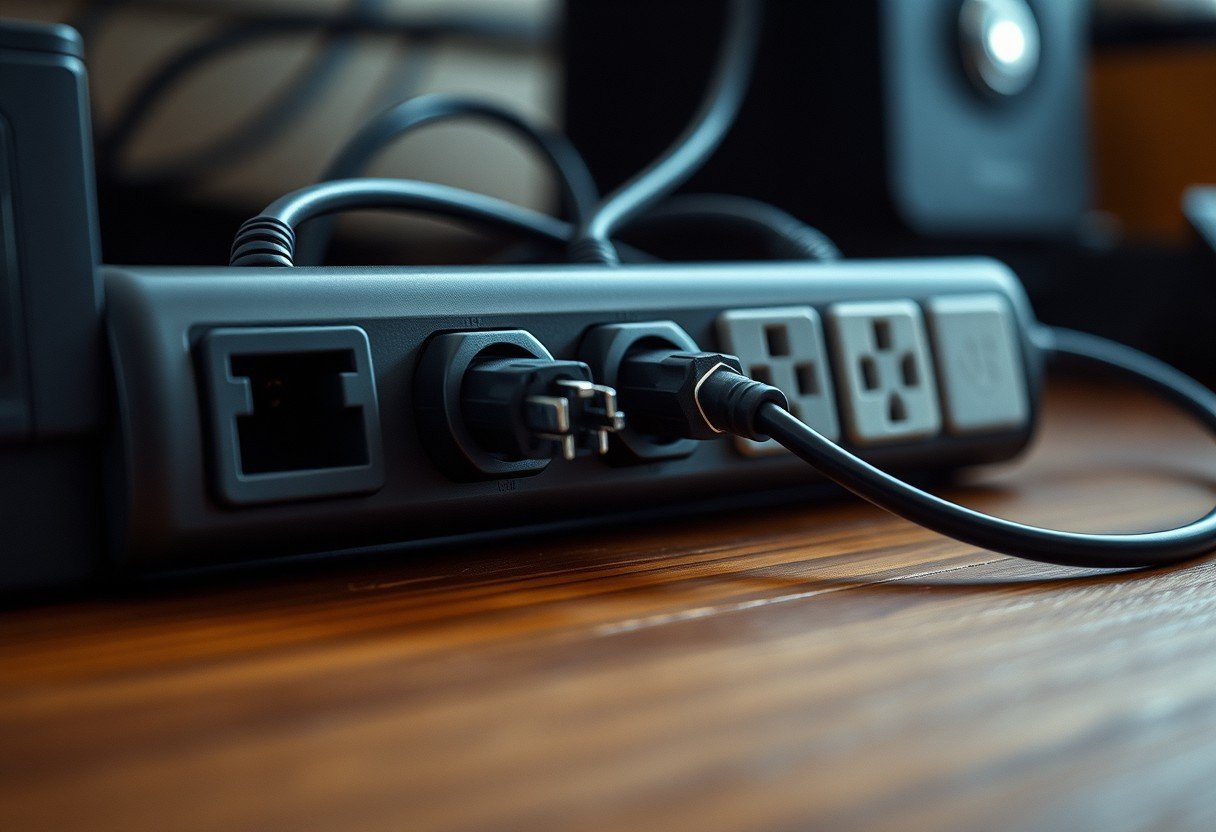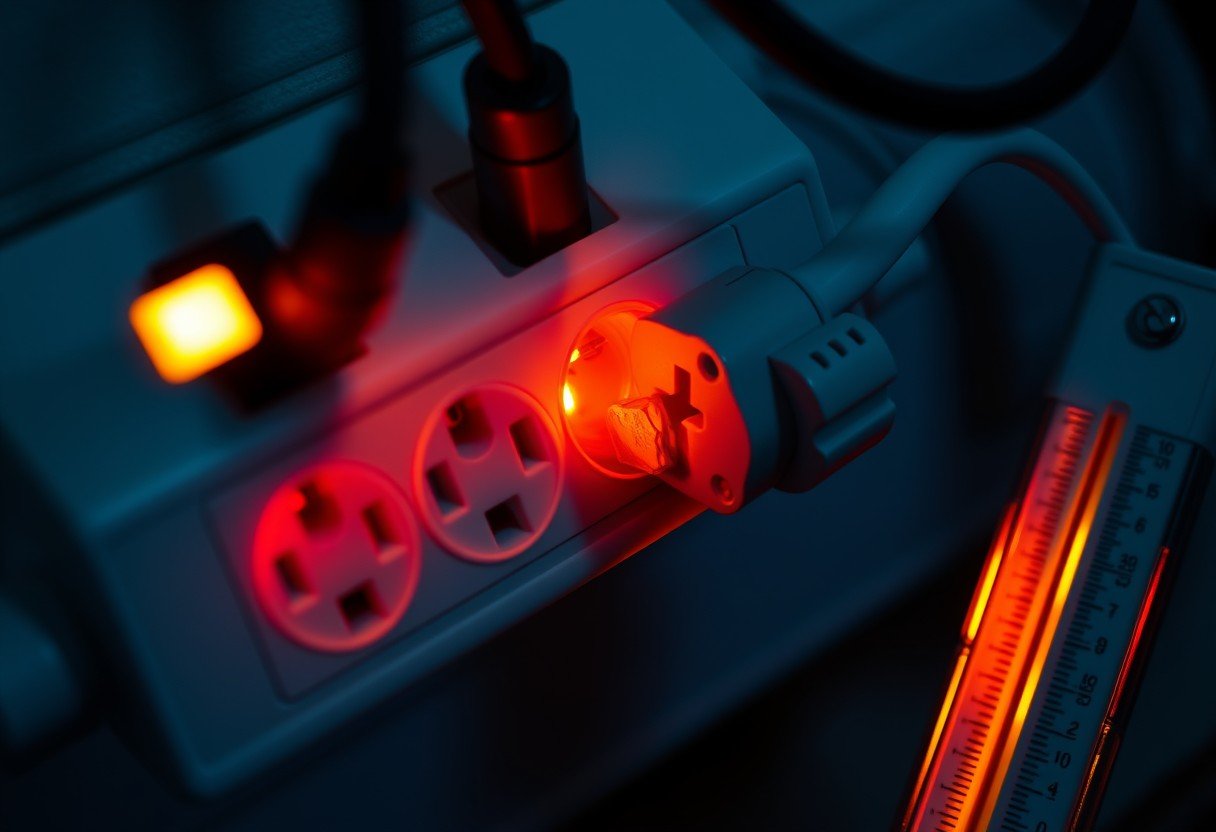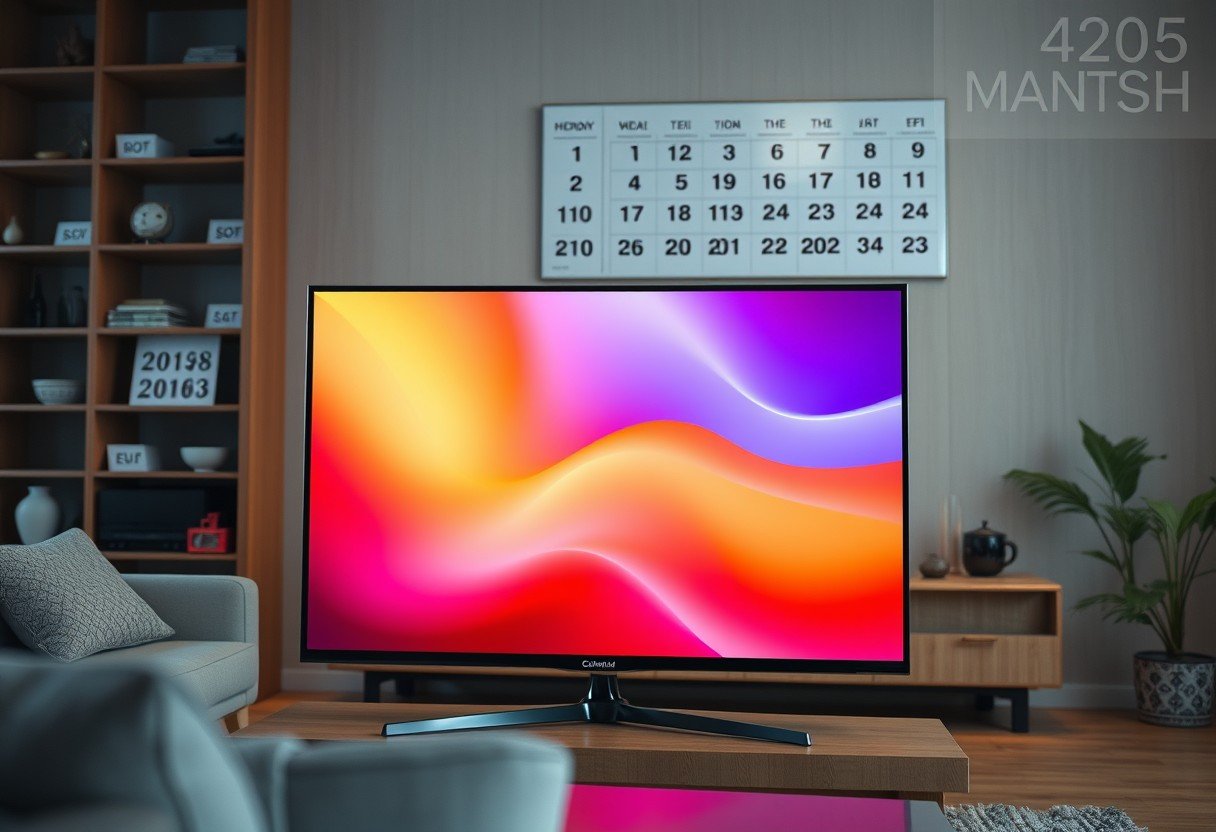It can be very frustrating when a power strip suddenly stops working, cutting power to your essential devices. This common issue happens for several reasons, from simple overloading to internal component failure after an electrical surge. Understanding why your power strip failed is the first step to preventing future problems and ensuring the safety of your home and electronics. This guide will walk you through the most frequent causes and what you should do about them.
The Most Common Causes of Power Strip Failure
You rely on your power strip to power multiple devices, but its functionality can be disrupted by a few common culprits. Knowing what causes these failures can help you use them more safely and effectively.
The number one reason a power strip stops working is overloading. Every power strip has a maximum amount of power it can safely handle, measured in watts. When you plug in too many high-power devices, like space heaters or hair dryers, you can exceed this limit. This causes the internal components to overheat, which can trip the circuit breaker or permanently damage the strip.
Electrical surges are another major threat. These are sudden, brief spikes in your home’s electrical voltage. Surges can be caused by lightning strikes, problems with the power grid, or even large appliances cycling on and off. A strong surge can instantly destroy the sensitive internal circuitry of a power strip, rendering it useless.
Even smaller, repeated surges can wear down the protective components over time. This means that a power strip with surge protection will gradually lose its ability to shield your devices, eventually failing altogether without any obvious warning sign.
Telltale Signs Your Power Strip is Failing
Before a power strip fails completely, it often gives off warning signs. Paying attention to these visual and performance-based clues can help you prevent damage to your electronics and avoid potential safety hazards.
Start with a quick visual inspection. Look closely at the cord and the casing of the power strip. Any signs of physical damage are a major red flag.
- Frayed or cracked electrical cords
- Scorch marks or discoloration around the outlets
- A persistent burning or plastic smell
- Visible smoke coming from the unit
If you notice any of these signs, you should immediately unplug the power strip and stop using it. These are indicators of serious internal damage that could lead to an electrical fire.
Performance issues can also signal that a power strip is on its last legs. You might notice that devices plugged into it don’t receive consistent power or fail to turn on at all. Sometimes, only a few of the outlets will work while others are dead. An audible buzzing or humming sound is another symptom of an internal malfunction that should not be ignored.
Why Built-in Safety Features Matter
Not all power strips are created equal. The cheapest models are often little more than simple extension cords with multiple outlets, offering no real protection. Investing in a power strip with key safety features is crucial for protecting your valuable electronics and your home.
The most important feature to look for is surge protection. A power strip with surge protection, often called a surge protector, is designed to absorb and divert the excess voltage from a power surge before it can reach your devices. This can save your computer, television, and other sensitive electronics from being destroyed.
Another vital feature is a circuit breaker. This is a small, often resettable switch on the power strip. If you overload the strip, the circuit breaker will automatically trip, cutting off power to prevent overheating and damage. This is a fundamental safety mechanism that protects both the strip and your home’s wiring.
Indicator lights are also helpful, as they can show you if the power strip is on and if the surge protection is still active. Over time, the surge protection components wear out, and a dedicated light will often turn off to let you know the strip is no longer protecting your devices.
Simple Maintenance for a Longer Lifespan
While all power strips will eventually need to be replaced, you can extend their functional life and ensure they operate safely with a few simple maintenance habits. Proper care is not just about longevity; it is about safety.
Make it a habit to regularly inspect your power strips, especially those that are in constant use or hidden behind furniture. Check the cord for any signs of fraying or damage and ensure the plug is firmly seated in the wall outlet. Also, keep the power strip clean and free of dust, which can block ventilation and contribute to overheating.
Following proper usage guidelines is the most effective way to prevent premature failure. The table below outlines some simple dos and don’ts for safe power strip use.
| Dos | Don’ts |
| Check the wattage of devices before plugging them in. | Never plug a power strip into another power strip (“daisy-chaining”). |
| Keep the strip in a well-ventilated area to avoid heat buildup. | Do not use high-power appliances like refrigerators or microwaves with a standard power strip. |
| Unplug the strip during electrical storms for extra protection. | Avoid using a power strip in wet or damp areas like bathrooms. |
By being mindful of how much power you are drawing, you can avoid overloading and significantly reduce the risk of failure or fire.
When and How to Dispose of an Old Power Strip
Knowing when to retire a power strip is just as important as knowing how to use one safely. These devices are not meant to last forever, and using a worn-out strip puts your electronics at risk.
You should replace your power strip immediately if it shows any signs of physical damage, such as a frayed cord or scorch marks. It’s also wise to replace it after a major electrical event, like a nearby lightning strike, as the protective circuits may have been compromised even if it still appears to work. Many experts recommend replacing surge protectors every three to five years as a general rule, since their protective capabilities degrade over time.
Do not simply throw an old power strip in the trash. Power strips are considered electronic waste, or e-waste, because they contain metals and plastics that can be harmful to the environment if they end up in a landfill.
Look for responsible ways to get rid of it. Many communities have designated e-waste recycling centers that will accept old power strips. Additionally, some electronics retailers have take-back programs or recycling events where you can drop off your old devices for safe and eco-friendly disposal.
Frequently Asked Questions
Why did my power strip suddenly stop working for no reason?
This is often due to a tripped internal circuit breaker caused by a temporary overload. Look for a small reset button on the strip. If resetting it doesn’t work, the internal fuse may have blown permanently or the unit has failed due to age or a power surge.
Can I plug a large appliance like a refrigerator into a power strip?
No, you should never plug major appliances like refrigerators, freezers, or microwaves into a standard power strip. These appliances draw a large amount of power and can easily overload the strip, creating a serious fire hazard. They should always be plugged directly into a wall outlet.
What is the difference between a power strip and a surge protector?
A basic power strip is just an extension cord with extra outlets. A surge protector looks similar but contains electronic components designed to protect your devices from power surges. For valuable electronics, you should always use a surge protector.
How long do power strips typically last?
The lifespan of a power strip depends on its quality and usage. A basic power strip can last for many years, but a surge protector’s protective components wear out. It’s recommended to replace surge protectors every 3-5 years or after a major power surge event.
Is it safe to use a power strip that makes a buzzing sound?
No, a buzzing or humming sound is a sign of an internal electrical problem, such as a loose connection or a failing component. Unplug the power strip immediately and replace it to avoid the risk of an electrical fire.









Leave a Comment